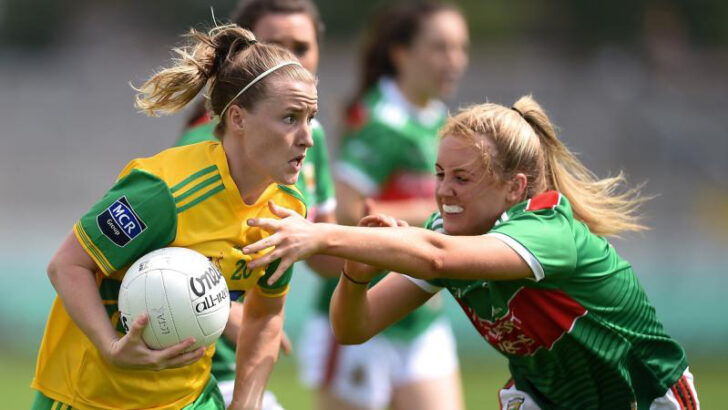Unladylike: A History of Ladies Gaelic Football
by Hayley Kilgallon (New Island, €24.95 / £19.50)
Beginning in the final quarter of the twentieth century, despite medical, religious and social objections, there was a remarkable increase in the number of girls and women participating in what were traditionally regarded as men’s sports.
This trend was particularly noticeable in Gaelic football. It also occurred in rugby and soccer. It led to the establishment of the Ladies Gaelic Football Association in 1974. In this study Hayley Kilgallon provides a comprehensive account of the first fifty years of this Association.
At the outset Kilgallon lists reports of women playing Gaelic football in earlier times. She claims that the first recorded game was in St James’s Park, Dublin, in September 1920. In that same month a ladies Gaelic football match was also held between teams representing Templeogue and Inchicore.
There was also a report that a Co Clare schoolteacher, Tom Garry, organised a ladies Gaelic football match between Cooraclare and a local parish, Leitrim, in 1926. The match, it seems, was refereed by Fr Michael Garry, his son. From the 1940s onwards ladies football matches featured at carnivals, festivals and fund-raising events throughout the country and were sometimes included in GAA tournaments.
Flourished
The more women’s Gaelic football flourished the clearer it became that it needed an overseeing organising body and a standard set of rules. The interest and publicity aroused by inter-county matches played by Kerry, Offaly, Tipperary, Waterford and Wexford in 1971-1973 prompted the promoters of ladies’ football to announce the holding of an All-Ireland Ladies Football Convention on July 5, 1974 to organise an All-Ireland Championship. The venue was Hayes’s Hotel in Thurles, Co Tipperary.
The selection of the venue was a nod in the direction of the fact that the GAA was founded there in 1884. At the convention – eventually held on July 18 – the Ladies Gaelic Football Association was established with a Central Committee on which Jim Kennedy, who for many years had been prominent in ladies football in Tipperary, was elected president.
The draw for the championship was made with the games to begin in August. The cup to be competed for was donated by Offaly-native Brendan Martin, the new assistant treasurer, as it has been ever since.
The aphorism mens sana in corpore sano is as relevant with regard to girls and women as with their male counterparts. Hence, the warmest of welcomes is due to the LGFA”
At subsequent meetings in Roscommon and Portlaoise the LGFA set out its Charter, Constitution and Rules. The rules which differed from those in the GAA rule-book concerned the size of the ball and some rules of play. In this last regard, while it was permissible to pick the ball directly off the ground, the shoulder-charge and rough play were banned.
The LGFA met representatives of the General Council of the GAA in an unsuccessful attempt to gain its recognition in 1976. This recognition was won in 1983 and four years later the LGFA All-Ireland final was held in Croke Park for the first time. Ellen O’Rourke became the LGFA’s first member of staff when she became CEO in 1997. The Countdown clock was introduced to the game in 1998. Concentrated but unsuccessful efforts were begun in 2015 to amalgamate the Camogie Board and the LGFA with the GAA. The discussions to this end continue.
Kerry and Cork have been the most successful teams in the LGFA All Ireland County Championship;Kerry with 12 wins, Cork with 11. Waterford club, Ballymacarbry, is the most successful LGFA club. Mary Joe Curran (Kerry) and Cora Staunton (Mayo) are tied for the most All-Stars at 11 awards each. The attendance at the LGFA All-Ireland finals in 2019 was 56,114.
The aphorism mens sana in corpore sano is as relevant with regard to girls and women as with their male counterparts. Hence, the warmest of welcomes is due to the LGFA, its world-wide membership of almost a quarter of a million and this splendid lavishly illustrated and meticulously researched account of such a remarkable achievement.


 Niamh McLaughlin (Donegal) against Eilis Roynane (Mayo) in full play
Niamh McLaughlin (Donegal) against Eilis Roynane (Mayo) in full play 